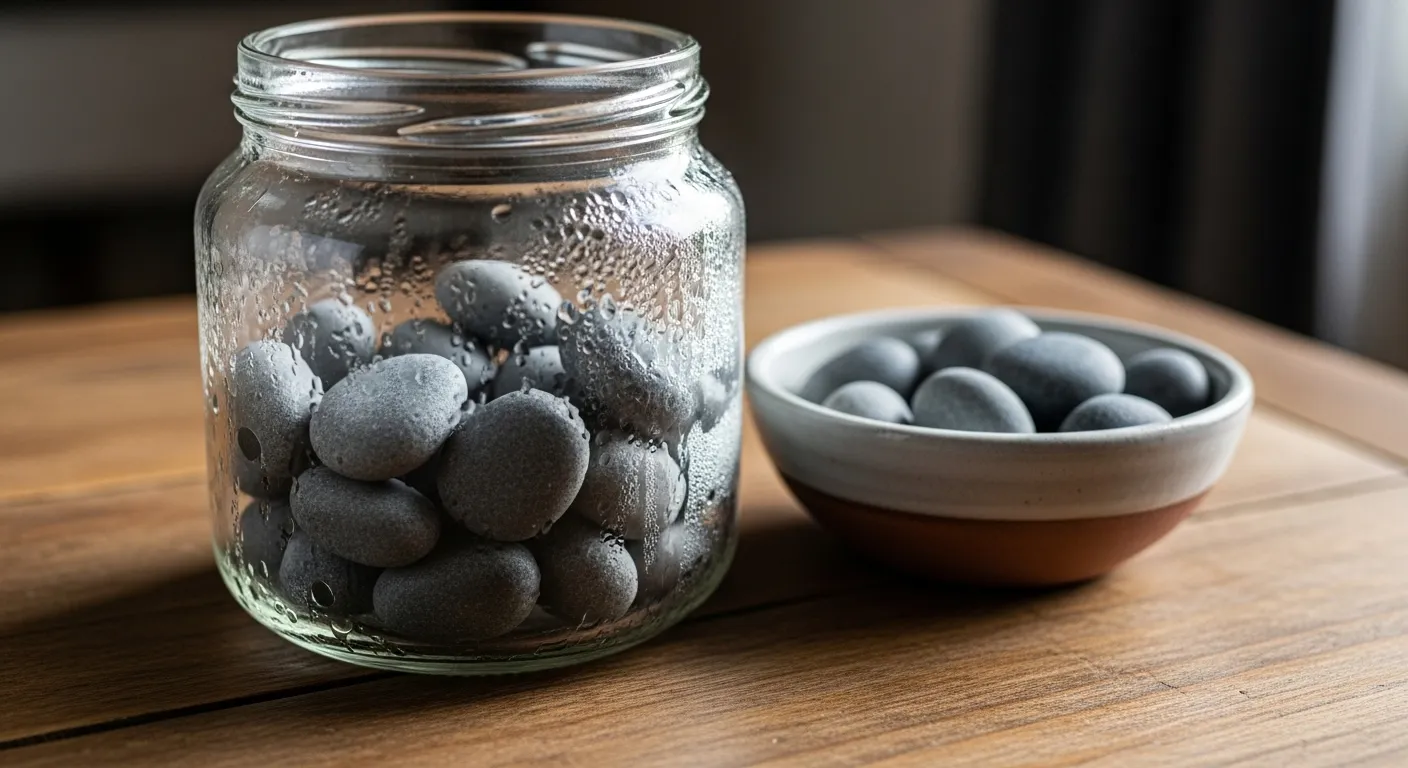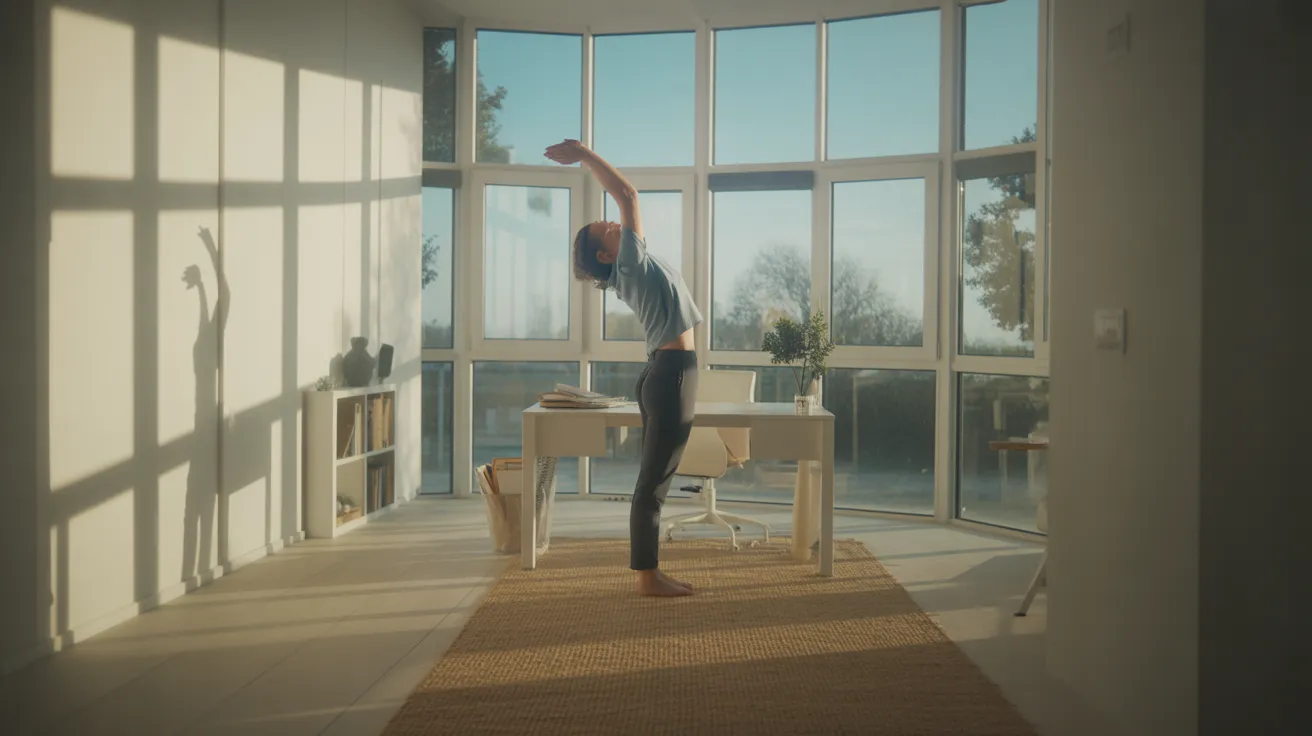
You’ve tried it all before. The burst of motivation on a Monday morning, the brand-new journal, the ambitious goal to meditate for 30 minutes every day or write 1,000 words before breakfast. For a few days, it works. You feel powerful, in control. You are a person who does the thing. And then, life happens. A stressful day at work, an unexpected errand, a night of poor sleep. Your willpower, which felt like an infinite well, suddenly runs dry. The habit feels less like a choice and more like a chore. Soon, it’s forgotten.
If this sounds familiar, you are not alone, and it is not a personal failing. Especially for those of us navigating the constant demands of modern urban life, willpower is an unreliable resource. Our environment is a minefield of distractions, notifications, and easy dopamine hits. Relying on sheer grit to build a new habit is like trying to swim upstream against a powerful current. You might make progress for a little while, but eventually, exhaustion sets in.
But what if there was a different way? A gentler, more sustainable approach to habit building that doesn’t rely on brute force? What if you could make your desired habits so easy, so simple, that it felt harder not to do them? This is the core principle of the frictionless habit building method. It’s not about finding more willpower; it’s about systematically designing your life so you need less of it. This guide will walk you through the science and strategy of creating durable, easy habits that stick, not through force, but through elegant, intelligent design. We will focus on tiny, consistent steps that lead to profound, lasting change without the risk of burnout.
📚 Table of Contents
- Understanding the Habit Loop: The Simple Science of Change
- The Four Pillars of Frictionless Habit Design
- Pillar 1: Choose Your Minimum Viable Action
- Pillar 2: Conduct a Friction Audit
- Pillar 3: Engineer Your Environment with Cues
- Pillar 4: Weave in Gentle Accountability
- What to Do When Life Gets in the Way: Relapse and Resilience
- The “Never Miss Twice” Rule
- Rethinking Streaks: From Pressure to Progress
- The Art of the Shame-Free Reset
- Putting It All Together: Two Real-World Examples
- Your Questions About Frictionless Habit Building, Answered
- How long does it *really* take to build a habit?
- What do I do when I travel or my routine is disrupted?
- I’ve been consistent, but I’ve hit a plateau. How do I make progress again?
- Can I build multiple frictionless habits at once?
- Your First Seven Days of Frictionless Living
Understanding the Habit Loop: The Simple Science of Change
Before we can design better habits, we need to understand how they work under the hood. Most of our daily actions aren’t conscious decisions. They are automatic routines that our brains run to conserve energy. This process is governed by a simple neurological feedback system known as the “habit loop.” While the science can get complex, the core model is beautifully simple. Understanding it is the first step toward making habits easy to start and sustain.
The habit loop consists of three parts:
1. The Cue: This is the trigger, the signal that tells your brain to go into automatic mode and which habit to use. A cue can be anything: a time of day (7:00 AM), a location (the kitchen), an emotional state (feeling stressed), or the preceding action in a sequence (finishing dinner). For a bad habit, the ping of your phone is a cue to check social media. For a good habit, lacing up your running shoes can be a cue to go for a jog.
2. The Action (or Routine): This is the behavior itself—the habit you perform. It can be physical (doing a push-up), mental (practicing a moment of mindfulness), or emotional (a knee-jerk reaction of anxiety). This is the part we typically focus on when we try to build or break a habit.
3. The Reward: This is the positive feedback that tells your brain, “Hey, this loop was worthwhile. Let’s do it again in the future.” The reward satisfies a craving. For scrolling social media, the reward might be a hit of social validation or a moment of distraction. For jogging, it might be the endorphin rush or a sense of accomplishment. The more immediate and satisfying the reward, the more strongly the brain learns to associate the cue with the action.
When you try to force a new, difficult habit, you are often fighting a weak loop. The cue might be unclear, the action too hard, and the reward too far in the future. The frictionless method works by intentionally designing a loop that is so smooth and satisfying that your brain eagerly adopts it.
From Doing to Being: The Power of Identity-Based Habits
There’s one more crucial layer to this model: identity. Often, we set outcome-based goals, like “I want to lose 20 pounds” or “I want to write a novel.” The problem is that these goals are distant, and the path to them is long. A more powerful approach is to focus on identity-based habits. Instead of focusing on what you want to achieve, you focus on who you want to become.
The goal isn’t just to run a marathon; it’s to become a runner. The goal isn’t just to write a book; it’s to become a writer. The goal isn’t to meditate for 100 hours; it’s to become a mindful person.
Why does this small shift in language matter so much? Because every time you perform a small action, you cast a vote for the type of person you want to be. When you choose to do one push-up, you are casting a vote for “I am a person who is strong and active.” When you write one sentence, you are casting a vote for “I am a writer.” These tiny wins reinforce your desired identity, and that new identity, in turn, makes it easier to perform the habit. You’re no longer forcing yourself to do something unnatural; you’re simply acting in alignment with who you are. This is the foundation of creating truly frictionless habits that last a lifetime.

The Four Pillars of Frictionless Habit Design
Now that we understand the “why” behind habits, let’s move to the “how.” Designing a frictionless habit isn’t a matter of chance; it’s a deliberate process of engineering your behavior and your environment. We can break this down into four essential pillars. Mastering these will give you a reliable framework for making habits easy to start and maintain, no matter how busy or unpredictable your life gets.
Pillar 1: Choose Your Minimum Viable Action
The single biggest mistake people make is starting too big. Our ambition outpaces our ability to be consistent. The solution is to define what we call a Minimum Viable Action (MVA). This is the absolute smallest, easiest version of your desired habit—an action so simple it feels almost ridiculous not to do it.
The purpose of the MVA is not to get results on day one. Its purpose is to build the neural pathway of consistency. It’s about showing up. Once the habit of showing up is automatic, you can gradually increase the difficulty. Think of it as laying the train tracks before you try to run the train.
Here are some examples of ambitious habits and their MVA counterparts:
- Goal: “Meditate for 20 minutes every morning.”
MVA: “Sit on my meditation cushion and take one deep breath.” - Goal: “Write 1,000 words a day.”
MVA: “Open my laptop and write one sentence.” - Goal: “Go to the gym for an hour, three times a week.”
MVA: “Put on my gym clothes.” - Goal: “Read a book every week.”
MVA: “Read one page.”
Your MVA should take less than two minutes to complete. It overcomes the initial inertia, which is often the hardest part. Anyone can find the time and energy for one deep breath or one sentence. By starting here, you make failure nearly impossible, and you begin casting those crucial votes for your new identity.
Pillar 2: Conduct a Friction Audit
Friction is anything that stands between you and your desired action. It’s the collection of tiny obstacles, decisions, and hassles that drain your willpower and make a habit feel like hard work. The goal of a friction audit is to identify these points of resistance and systematically eliminate them. You want to make the path to your good habit as smooth and downhill as possible.
Think about the habit you want to build and walk through the entire process in your mind. What are the steps involved? Where could you get stuck? Friction can be:
- Physical: Your yoga mat is rolled up in the back of a closet. Your journal is in a different room from your favorite pen. Your running shoes are buried under a pile of other shoes.
- Mental: You have too many choices. “Which workout should I do?” “What should I write about?” “Which book should I read?” Decision fatigue is a major source of friction.
- Emotional: You feel self-conscious or fear judgment. You’re intimidated by the task. You feel overwhelmed by the size of the goal.
To reduce friction, you must prepare your environment in advance. If you want to go for a run in the morning, lay out your running clothes, shoes, socks, and headphones the night before. If you want to drink more water, fill up a water bottle and place it on your desk before you start work. If you want to write, leave a document open on your computer with a prompt already written. Each obstacle you remove makes the habit a little more inevitable.
Pillar 3: Engineer Your Environment with Cues
Your environment is one of the most powerful and invisible forces shaping your behavior. The most effective way to build a new habit is to make the cue for it obvious and unavoidable. This goes hand-in-hand with reducing friction. You are essentially designing your surroundings to be a constant, gentle reminder of your intentions.
The best way to do this is through a technique called habit stacking. This involves linking your new desired habit to an existing, already-established habit. The completion of the old habit becomes the cue for the new one. The formula is simple: “After I [CURRENT HABIT], I will [NEW HABIT].”
- “After I brush my teeth in the morning, I will do my one minute of stretching.”
- “After I pour my morning cup of coffee, I will write one sentence in my journal.”
- “After I take off my work shoes, I will change into my gym clothes.”
This works because your existing habits are already hardwired into your brain. You don’t have to remember to brush your teeth; the cue is automatic. By piggybacking your new MVA onto this solid foundation, you leverage existing momentum. You’re not creating a new habit loop from scratch; you’re simply inserting a new action into a pre-existing one. This is a cornerstone of effective habit building.
Pillar 4: Weave in Gentle Accountability
While the frictionless method is designed to be internally driven, a touch of external accountability can provide a powerful stabilizing force, especially in the early days. The key is to keep it gentle and supportive, not punitive.
This doesn’t have to be complicated. It could be as simple as having a “habit partner.” You and a friend can agree to text each other a simple “Done” each day after you’ve completed your MVA. The act of sending that text provides a small, immediate reward and reinforces your commitment. Knowing someone else is expecting your message can be just enough of a nudge on days when your motivation is low.
Another method is simple tracking. Use a calendar and put an “X” on each day you complete your habit. The goal isn’t to build an unbreakable chain, but to create a visual record of your effort. Seeing the X’s accumulate provides a sense of progress and satisfaction, which acts as its own reward and encourages you to keep going. This simple act makes your progress tangible and keeps the habit top of mind.
![]()
What to Do When Life Gets in the Way: Relapse and Resilience
No matter how perfectly you design your habits, there will be days when you miss. You’ll get sick, travel, face an emergency, or simply feel exhausted. This is not a failure; it is an inevitable part of the human experience. The most important factor in long-term success is not perfection, but your ability to get back on track quickly and compassionately. A truly robust system for habit building includes a plan for when things go wrong.
The “Never Miss Twice” Rule
Perfectionism is the enemy of progress. The all-or-nothing mindset tells us that if we miss one day, the whole endeavor is ruined, so we might as well give up completely. This is a cognitive trap. One missed workout doesn’t undo the benefits of the previous ten. One missed day of writing doesn’t erase a week of progress.
A more resilient and effective mindset is to adopt the “never miss twice” rule. It’s simple: you can miss one day, but you do whatever it takes to get back on track the very next day. One missed day is an accident. Two missed days is the beginning of a new, undesirable habit.
This rule provides a perfect balance of flexibility and structure. It gives you permission to be human while creating a clear, non-negotiable boundary that prevents a single slip-up from spiraling into a complete relapse. If you miss your morning meditation, you make a firm commitment to do it—even just the MVA of one deep breath—the next morning. This is one of the most powerful strategies for creating durable, easy habits because it builds resilience directly into the system.
Rethinking Streaks: From Pressure to Progress
Habit-tracking apps and journals have popularized the idea of “the streak”—an unbroken chain of consecutive days performing a habit. Streaks can be incredibly motivating. Watching the number climb can provide a powerful incentive to keep going. However, they have a significant dark side. The longer the streak gets, the more pressure you feel to maintain it. It can become a source of anxiety rather than motivation.
And when the streak inevitably breaks—which it will—the feeling of failure can be so demoralizing that it causes people to quit altogether. The streak becomes the goal, rather than the habit itself.
A healthier approach is to focus on your overall success rate rather than your consecutive-day streak. Instead of asking, “Is my streak intact?” ask, “Did I perform my habit on at least 25 out of the last 30 days?” This reframes your perspective from perfection to consistency. It allows for off days without derailing your sense of progress. The goal is not an unbreakable chain; it’s a pattern of behavior that is consistent over the long term. This approach supports a more sustainable and gentle path to frictionless habit building.
The Art of the Shame-Free Reset
When you miss a day, your internal critic might show up with a host of unhelpful judgments: “I’m so lazy,” “I have no discipline,” “I knew I couldn’t do it.” This shame and guilt is a heavy burden that makes it even harder to restart. The frictionless method requires a different response: curiosity and compassion.
Instead of judging yourself, treat the missed day as a piece of data. Ask yourself, “Why did I miss today? What got in the way?” Perhaps the friction was higher than you realized. Maybe your cue wasn’t obvious enough. Was your MVA still too much to ask on a particularly stressful day? Use the missed day as an opportunity to debug your system, not to criticize your character.
Maybe you need to make your MVA even smaller. Maybe you need to adjust your cue. Maybe you need to do a more thorough friction audit. Every setback is a chance to learn and refine your approach. A shame-free reset means acknowledging the slip, learning from it, and recommitting to your next MVA without carrying the weight of past “failures.” This is the essence of resilience and the key to making change last.

Putting It All Together: Two Real-World Examples
Theory is useful, but seeing the frictionless habits method in action is what makes it click. Let’s walk through two detailed examples of how someone might design a new routine using the principles of Minimum Viable Action, friction reduction, environmental cues, and identity framing. Notice how the focus is on ease and consistency, not intensity.
Worked Example 1: The Evening Wind-Down Routine
Goal: Get better, more consistent sleep to feel more rested and focused during the day.
Identity: “I am someone who values rest and ends my day peacefully.”
The Problem: Sarah often finds herself scrolling on her phone in bed until late at night. She knows it’s bad for her sleep, but by the end of a long day, she lacks the willpower to resist the easy distraction. Her bedroom is cluttered, and her phone is the first thing she reaches for.
The Frictionless Redesign:
First, Sarah defines her Minimum Viable Action (MVA). Instead of a complex, hour-long routine, her MVA is simply: “At 10:00 PM, I will plug my phone in to charge across the room, not on my nightstand.” This is a simple, two-minute action that makes the biggest difference.
Next, she conducts a friction audit. The primary friction is the easy accessibility of her phone. By moving the charger, she adds significant physical friction to mindless scrolling. To reduce friction for a better habit, she places a book she’s excited to read on her nightstand, right where her phone used to be. The choice is no longer between “scrolling” and “nothing,” but between “getting out of bed to get my phone” and “effortlessly picking up this interesting book.”
Then, she engineers her cue. She uses habit stacking. Her cue is an alarm she sets for 10:00 PM with the label “Time to Wind Down.” The alarm going off is the trigger. The sequence becomes: “When my 10:00 PM alarm goes off, I will plug in my phone across the room.”
Finally, she adds a touch of gentle accountability by telling her partner her plan. She simply says, “My goal is to have my phone charging by 10:00. If you see me on it after that, feel free to give me a gentle nudge.” This isn’t about being policed; it’s about sharing an intention to make it more real.
Within a week, the new pattern starts to feel natural. Plugging in her phone becomes automatic. Most nights, she reads a few pages of her book and feels her mind calming down. She is casting a vote for her new identity as someone who rests, and her sleep quality begins to improve, all without a major battle of willpower.
Worked Example 2: The Morning Focus Primer
Goal: Start the workday with clarity and intention instead of immediately diving into a chaotic inbox.
Identity: “I am a focused, proactive professional who designs my day intentionally.”
The Problem: David starts his workday by opening his email. He immediately gets pulled into reactive mode, responding to other people’s agendas. His own important priorities get pushed to later in the day, when he has less energy. The lure of the inbox feels irresistible.
The Frictionless Redesign:
David’s MVA is not to plan his entire day, but simply: “Before I open my email, I will open my journal and write down my single most important task for the day.” This takes less than 60 seconds but completely reframes his morning.
He performs a friction audit. The friction for his old habit is zero; his email opens automatically on startup. The friction for his new habit is that his journal is on a bookshelf and his pen is somewhere else. To fix this, he removes the friction for his desired habit: he leaves his journal and pen on his closed laptop every evening. He also adds friction to his old habit: he logs out of his email account at the end of each day and disables automatic startup, forcing a deliberate action to check it.
His cue is a clear example of habit stacking. The established habit is making coffee. The new sequence is: “After my coffee is done brewing, I will sit at my desk with my mug and write my one priority task before my laptop is even fully on.” The coffee becomes the trigger for a moment of reflection, not for checking email.
For accountability, he uses a simple calendar on his wall. Each day he completes his MVA, he draws a green checkmark. The visual feedback of a row of checkmarks is a satisfying reward that reinforces the behavior. He isn’t worried about an unbroken streak, but he enjoys seeing the evidence of his new identity as a focused professional taking shape.

Your Questions About Frictionless Habit Building, Answered
As you begin to apply these ideas, questions will naturally arise. Here are answers to some of the most common queries we receive about implementing the frictionless method. These insights will help you troubleshoot and adapt the principles to your unique circumstances.
How long does it *really* take to build a habit?
You may have heard the popular myth that it takes 21 days to form a new habit. While a catchy idea, research suggests it’s a significant oversimplification. A landmark study published in the European Journal of Social Psychology found that, on average, it takes about 66 days for a new behavior to become automatic. However, the range was enormous—from 18 days to 254 days. The takeaway is that there is no magic number. The time it takes depends on the complexity of the habit, the individual, and the environment. Instead of focusing on a deadline, focus on the process. Concentrate on your MVA, on reducing friction, and on the “never miss twice” rule. The habit will become automatic when it’s ready. Patience is part of the process of easy habits.
What do I do when I travel or my routine is disrupted?
Disruptions like travel, holidays, or illness are a primary reason why well-intentioned habits fall apart. This is where the power of the Minimum Viable Action truly shines. When your normal routine is impossible, don’t abandon the habit entirely. Instead, scale back to your absolute minimum. If your habit is a 30-minute workout, your travel MVA might be “do ten squats in my hotel room.” If your habit is writing 500 words, your MVA could be “write one sentence on my phone’s notepad.” The goal during a disruption is not to make progress, but to maintain momentum and reinforce your identity. You are reminding yourself, “Even on a chaotic day, I am still a person who moves my body,” or “I am still a writer.” This makes it infinitely easier to ramp back up to your normal routine when life settles down.
I’ve been consistent, but I’ve hit a plateau. How do I make progress again?
A plateau is often a sign of success! It means the initial MVA has become automatic and no longer requires conscious effort. Your brain has successfully wired the habit. Now is the time to introduce a small, incremental challenge. This is similar to the concept of progressive overload in fitness. Once the habit is established, you can begin to slowly increase the duration or difficulty. If your MVA was “read one page,” you might increase it to “read for five minutes.” If it was “do one push-up,” you could try for two, or try a more difficult variation. The key is to make the increase just as small and frictionless as your original MVA. Make the next step so easy that it feels like a natural evolution, not a daunting new challenge. This gradual scaling is central to sustainable habit building.
Can I build multiple frictionless habits at once?
While it’s tempting to overhaul your life all at once, it’s generally more effective to start with just one or two new habits. Your willpower and attention are finite resources, especially at the beginning of a behavior change journey. Trying to build several unrelated habits simultaneously—like meditating, exercising, and learning a language all at once—can spread you too thin and lead to none of them sticking. A better approach is to focus on one cornerstone habit that will create a positive ripple effect. Alternatively, you can use habit stacking to bundle two or three very small, related habits together into a single routine, like: “After my coffee (cue), I will drink a glass of water, take my vitamin, and write my one priority task for the day.” This creates a single, powerful “moment of intention” rather than three separate habits to remember.

Your First Seven Days of Frictionless Living
You now have the complete blueprint for making habits easy to start and building them to last. You understand the science of the habit loop, the power of identity, and the practical pillars of frictionless design. The key is to move from learning to doing. True change comes not from reading one more article, but from taking one small, intentional action.
The beauty of the frictionless habit building method is that it doesn’t require a massive burst of motivation or a perfectly clear schedule. It asks for a moment of thoughtful design upfront, followed by a commitment to an action so small it’s almost effortless. It’s about being gentle with yourself, playing the long game, and trusting that tiny, consistent efforts compound into remarkable transformations.
Here are your next steps. Don’t just read them; choose one to act on in the next ten minutes. Your journey begins not on Monday, not next month, but right now, with a single, simple choice.
1. Choose One Habit: For the next 30 days, commit to building just one new habit. Resit the urge to do more. What is the single most impactful behavior that, if done consistently, would improve your life? Choose it.
2. Define Your Minimum Viable Action (MVA): Shrink that habit down to its smallest possible version. What is the two-minute, “too easy to fail” version of your habit? Write it down in a clear, simple sentence. This is your only goal for the first week.
3. Conduct a 5-Minute Friction Audit: Tonight, before you go to bed, take five minutes to set up your environment for tomorrow’s MVA. Lay out the clothes, put the journal on your desk, place the glass by the sink. Remove one point of friction to make success tomorrow just a little bit easier.
4. Stack Your Habit: Identify a solid, existing habit in your daily routine that can serve as the cue for your new MVA. Write down your habit stack formula: “After I [existing habit], I will [new MVA].” Say it out loud.
Remember, the goal is not perfection. It is progress. It is the quiet, daily act of casting a vote for the person you wish to become. Start small, be kind to yourself, and begin today.
Disclaimer: The information provided in this article is for informational purposes only and is not intended as a substitute for professional medical or psychological advice, diagnosis, or treatment. Always seek the advice of your physician or other qualified health provider with any questions you may have regarding a medical condition or mental health.
For expert guidance on productivity and focus, visit Getting Things Done (GTD), OSHA Ergonomics, National Institutes of Health (NIH), National Sleep Foundation and American Institute of Stress.






